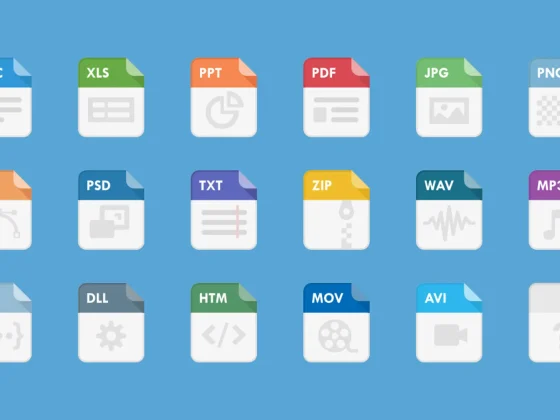In the previous MAD Skills Compose Basics article, you learned how to think in Compose — you describe your UI in Kotlin as functions. No more XML needed! In this article, we will dive deeper into these functions and how you can build UI with them.
As a reminder, we will be answering your questions on Compose Basics in our live Q&A session on October 13th. Make sure to leave a comment here, on YouTube, or by using the #MADCompose hashtag on Twitter.
To understand how these functions work, let’s see how we can build the single choice question screen of Jetsurvey, one of our Compose samples.
From our partners:

You can watch the accompanying video to this article here.
A simple composable function
A single answer in the survey can be written in Compose as a function containing a Row with an Image, Text, and a RadioButton.
// Copyright 2022 Google LLC.
// SPDX-License-Identifier: Apache-2.0
@Composable
fun SurveyAnswer(answer: Answer) {
Row {
Image(answer.image)
Text(answer.text)
RadioButton(false, onClick = { /* … */ })
}
}
To create a UI component in Compose, we must annotate a function with the <strong class="ke iz">@Composable</strong> annotation. This annotation tells the Compose compiler that this function is intended to convert data into UI, so an answer into UI.¹
Functions with this annotation are also called composable functions, or composables for short. These functions are the building blocks of UI in Compose. It’s quick and easy to add this annotation encouraging you to organize your UI into a library of reusable elements.
For example, to implement a list of possible answers to select from, we can define a new function called SingleChoiceQuestion that takes in a list of answers, and then call the SurveyAnswer function that we have just defined.
// Copyright 2022 Google LLC.
// SPDX-License-Identifier: Apache-2.0
@Composable
fun SingleChoiceQuestion(answers: List<Answer>) {
Column {
answers.forEach { answer ->
SurveyAnswer(answer = answer)
}
}
}
SingleChoiceQuestion accepts parameters which allows it to be configured by the app’s logic. In this case, it accepts a list of possible answers so that it can display these options to the UI. Notice that the composable doesn’t return anything (it returns `Unit`), but instead, it emits UI. Specifically, it emits the Column layout composable that’s part of the Compose toolkit which arranges items vertically. Within the column, it emits a SurveyAnswer composable for each answer.
Composables are immutable. You can’t hold a reference to them — like holding a reference to a single answer — and later update its contents. You need to pass any and all information as parameters when you call it.
Notice that since the function is written in Kotlin, we can use the full Kotlin syntax and control flow to produce our UI. Here we’re using forEach to iterate through each answer and call SurveyAnswer to display them. If we want to conditionally display something else, it’s as simple as using an if statement. No View.visibility = View.GONE or View.INVISIBLE needed. With a declarative UI framework like Compose, if you want your UI to look differently depending on the inputs provided, the composable must describe how your UI should look for every possible value of inputs. Using conditional statements like this snippet is how you can achieve this.
// Copyright 2022 Google LLC.
// SPDX-License-Identifier: Apache-2.0
@Composable
fun SingleChoiceQuestion(answers: List<Answer>) {
Column {
if (answers.isEmpty()) {
Text("There are no answers to choose from!")
} else {
answers.forEach { answer ->
SurveyAnswer(answer = answer)
}
}
}
}
Composables must be fast and free of side-effects. It must behave the same when called multiple times with the same argument, and it should not modify properties or global variables. We say that functions with this property are idempotent. This property is necessary for all composables so that UI can be emitted correctly when functions are reinvoked with new values.
Notice that the parameters provided to the functions entirely control the UI. This is what we mean by transforming state into UI. The logic in the function will guarantee that the UI can never get out of sync. If the list of answers changes, then a new UI is generated from the new list of answers by executing this function again and redrawning the UI if necessary.
This process of regenerating UI when state changes is called recomposition. Since composables are immutable, recomposition is the mechanism for updating UI with new state.
Recomposition and State of composable functions
Recomposition happens when a composable is reinvoked with different function parameters. This happens because State that the function depends on changes.
For example, say the SurveyAnswer composable accepts a parameter isSelected which dictates if the answer is selected or not. Initially, no answer is selected:
// Copyright 2022 Google LLC.
// SPDX-License-Identifier: Apache-2.0
@Composable
fun SingleChoiceQuestion(answers: List<Answer>) {
answers.forEach { answer ->
SurveyAnswer(
answer = answer,
isSelected = false,
)
}
}
In the View world, interacting by tapping on one of the answer UI elements would visually toggle it as Views hold their own state. In the Compose world, however, since false is provided to all SurveyAnswer composables, all answers would remain unselected despite user interaction. To make them visually respond to user interaction, the composable needs to be recomposed so that the UI can be regenerated with new state.
To do that, a new variable needs to be introduced which holds the selected answer. Additionally, the variable needs to be a <a class="au la" href="https://developer.android.com/reference/kotlin/androidx/compose/runtime/MutableState" target="_blank" rel="noopener ugc nofollow">MutableState</a>— an observable type that is integrated within the Compose runtime. Any changes to the state will automatically schedule a recomposition for any composables that read it. A new MutableState can be created with the <a class="au la" href="https://developer.android.com/reference/kotlin/androidx/compose/runtime/package-summary#mutableStateOf(kotlin.Any,androidx.compose.runtime.SnapshotMutationPolicy)" target="_blank" rel="noopener ugc nofollow">mutableStateOf</a>method like so:
// Copyright 2022 Google LLC.
// SPDX-License-Identifier: Apache-2.0
@Composable
fun SingleChoiceQuestion(answers: List<Answer>) {
// Initialize selectedAnswer to null since no answer will be selected at first
var selectedAnswer: MutableState<Answer?> =
mutableStateOf(null)
answers.forEach { answer ->
SurveyAnswer(
answer = answer,
isSelected = (selectedAnswer.value == answer),
)
}
}
Note in the snippet above that the value of isSelected has been updated to compare the current answer to selectedAnswer. Since selectedAnswer is of type MutableState, we have to use the value property to get the selected answer. When this value changes, Compose will automatically re-execute the SurveyAnswer so that the selected answer is highlighted.
The snippet above won’t quite work, however. The value of selectedAnswer needs to be remembered across recomposition so that it is not overwritten when SingleChoiceQuestion is reinvoked. To fix that, the mutableStateOf call should be performed within a call to remember. This guarantees that the value is remembered, and not reset, when the composable recomposes. To remember values across configuration changes, we can also use rememberSaveable:
// Copyright 2022 Google LLC.
// SPDX-License-Identifier: Apache-2.0
@Composable
fun SingleChoiceQuestion(answers: List<Answer>) {
var selectedAnswer: Answer? by
rememberSaveable { mutableStateOf(null) }
answers.forEach { answer ->
SurveyAnswer(
answer = answer,
isSelected = (selectedAnswer == answer),
)
}
}
The above code snippet can further be refined by using Kotlin’s delegated property syntax on the selectedAnswer variable. Doing so changes the type from MutableState<Answer?> to simply, Answer?. This syntax is quite nice as we can work directly with the value of the underlying state — no more calls to the value property on a MutableState object:
// Copyright 2022 Google LLC.
// SPDX-License-Identifier: Apache-2.0
@Composable
fun SingleChoiceQuestion(answers: List<Answer>) {
var selectedAnswer: Answer? by
rememberSaveable { mutableStateOf(null) }
answers.forEach { answer ->
SurveyAnswer(
answer = answer,
isSelected = (selectedAnswer == answer),
)
}
}
With our newly introduced state, we can pass a lambda function for the onAnswerSelected parameter so we can perform an action when the user makes a selection. In the definition of this lambda, we can set the value of selectedAnswer to the new one:
// Copyright 2022 Google LLC.
// SPDX-License-Identifier: Apache-2.0
@Composable
fun SingleChoiceQuestion(answers: List<Answer>) {
var selectedAnswer: Answer? by
rememberSaveable { mutableStateOf(null) }
answers.forEach { answer ->
SurveyAnswer(
answer = answer,
isSelected = (selectedAnswer == answer),
onAnswerSelected = { answer -> selectedAnswer = answer }
)
}
}
If you recall from the previous article, events are the mechanism for how State is updated. Here, the event onAnswerSelected would be invoked when the user interacts by tapping an answer.
The Compose runtime automatically keeps track of where state reads occur so that it can intelligently recompose composables that depend on that state. As a result, you don’t need to explicitly observe State, or manually update the UI.
Behaviors and properties of composables
There are some other behavioral properties of composable functions you should also be aware of. Because of these behaviors, it’s important that your composable functions are side-effect free, and behave the same when called multiple times with the same argument.
Looking at the snippet below, you might assume that the code runs sequentially. But this isn’t necessarily true. Compose can recognize that some UI elements are higher priority than others, and so those elements might be drawn first. Say for example you have code that draws three screens in a tab layout. You might assume that StartScreen is executed first, however, these executions can happen in any order.
// Copyright 2022 Google LLC.
// SPDX-License-Identifier: Apache-2.0
@Composable
fun ButtonRow() {
MyFancyNavigation {
StartScreen()
MiddleScreen()
EndScreen()
}
}
2. Composable functions can run in parallel
Composables can run in parallel thereby taking advantage of multiple cores which improves the rendering performance of a screen. In the code snippet below, the code runs side-effect free and transforms the input list to UI.
// Copyright 2022 Google LLC.
// SPDX-License-Identifier: Apache-2.0
@Composable
fun ListComposable(myList: List<String>) {
Row(horizontalArrangement = Arrangement.SpaceBetween) {
Column {
for (item in myList) {
Text("Item: $item")
}
}
Text("Count: ${myList.size}")
}
}
However, if the function writes to a local variable, such as in the snippet below, the code is no longer considered side-effect free. Doing something similar to the code below may result in odd behaviors in your UI.
// Copyright 2022 Google LLC.
// SPDX-License-Identifier: Apache-2.0
@Composable
fun ListWithBug(myList: List<String>) {
var items = 0
Row(horizontalArrangement = Arrangement.SpaceBetween) {
Column {
for (item in myList) {
Text("Item: $item")
items++ // Avoid! Side-effect of the column recomposing.
}
}
Text("Count: $items")
}
}
3. Recomposition skip as much as possible
Compose does its best to recompose only portions of that UI that need to be updated. If a composable doesn’t use the state that triggered recomposition, then it will be skipped. In the snippet, if the name string changes, the Header and Footer composables will not be re-executed since it does not depend on that state.
// Copyright 2022 Google LLC.
// SPDX-License-Identifier: Apache-2.0
@Composable
fun GreetingScreen(name: String) {
Column {
Header()
Greeting(name = name)
Footer()
}
}
4. Recomposition is optimistic
Recomposition is optimistic — this means that Compose expects to finish recomposition before the parameters change again. If a parameter does change before recomposition finishes, Compose might cancel the recomposition and restart it with the new parameter.
5. Composable functions might run frequently
Lastly, composable functions might run frequently. This might be the case if your composable function contains an animation that needs to be executed for every frame. This is why it’s important to make sure that your composable functions are fast to avoid dropped frames.
If you need to perform long-running operation, don’t do it in the composable function, Instead perform it off the UI thread and only use the result in the composable.
Summary
We covered a lot! To summarize:
- You can create composable functions by using the
@Composableannotation - It’s quick and easy to create composables, encouraging you to organize your UI into a library of reusable components.
- Composables can and should accept parameters to configure their behavior
- MutableState, remember and rememberSaveable can be used to store a component’s state and have Compose automatically track and recompose changes
- Composables should be side-effect free
We also learned about some interesting properties of composables. Composables can:
- Execute in any order
- Run in parallel
- Be skipped
- Run frequently
The Compose toolkit provides a lot of foundational and powerful composables that help you build beautiful apps. That’s what we’ll cover next. If you want to jump ahead, check out the following resources:
Got any questions? Leave a comment below or use the #MADCompose hashtag on Twitter and we will address your questions in our upcoming live Q&A for the series on October 13. Stay tuned!
¹ Not all functions annotated with @Composable return UI. For example, functions that make a call to remember don’t return UI, however, they do produce a node in the Compose UI tree.
By Chris Arriola
Source Medium
For enquiries, product placements, sponsorships, and collaborations, connect with us at [email protected]. We'd love to hear from you!
Our humans need coffee too! Your support is highly appreciated, thank you!








